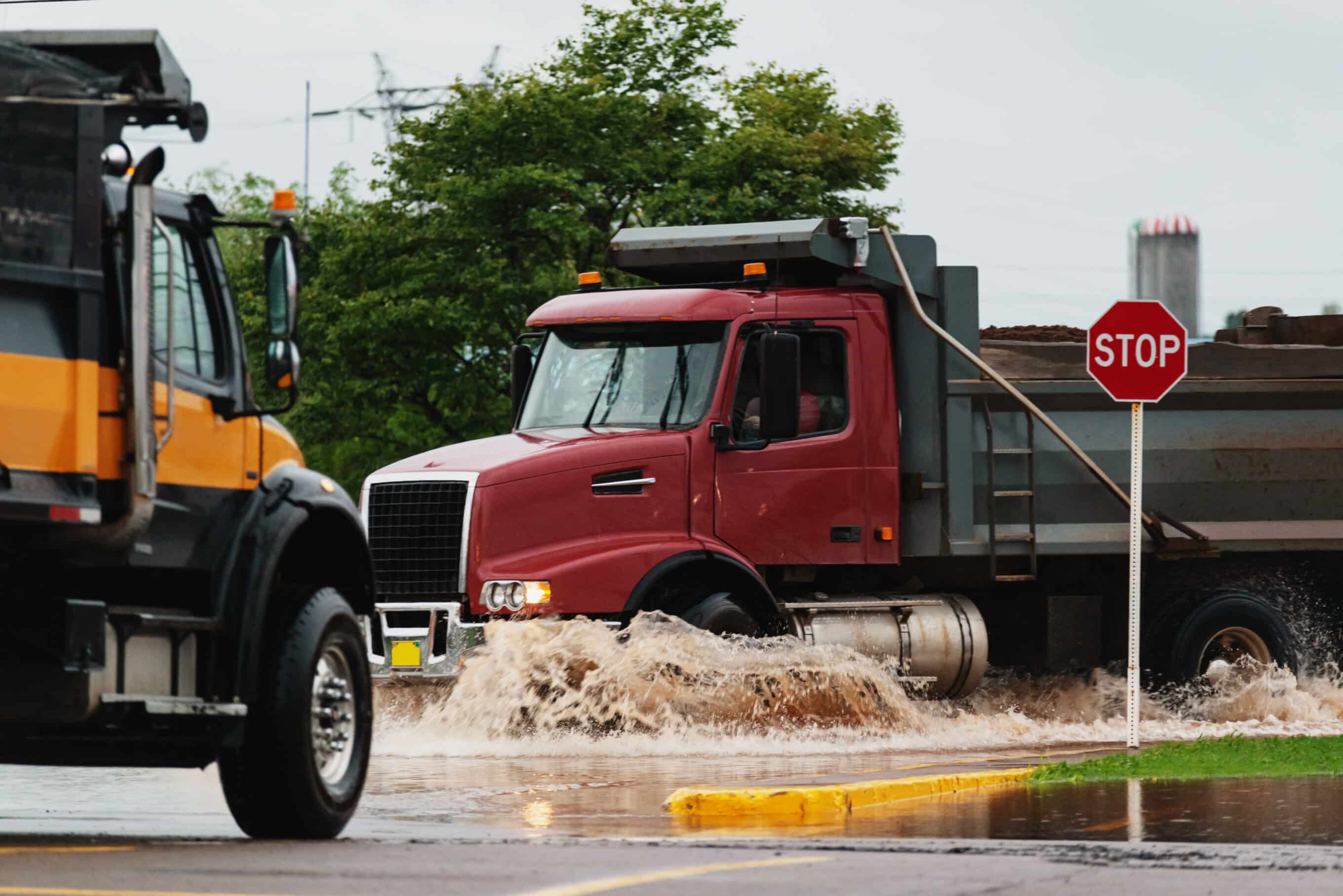Secondary perils become primary concern for insurers
Historically, cyclones (hurricanes) and earthquakes have been known for generating losses and headlines, but the insurance industry is increasingly concerned about the mounting financial impact of secondary perils.
What are primary and secondary perils?
When it comes to perils in insurance, there are two classifications – primary and secondary.
‘Primary perils’ are defined as those that have the highest loss potentials, are well-monitored, and usually covered by catastrophe models. Earthquakes and tropical cyclones (hurricanes) are the events most insurers consider to be primary perils.
‘Secondary perils’, on the other hand, are generally defined as smaller to mid-sized events, or the secondary effects that follow a primary peril. Secondary effects of a primary peril could include cyclone-induced flooding, storm surges, hailstorms, tsunamis, and fire following an earthquake. Other secondary perils are independent events, often not modelled and receive little monitoring from the insurance industry, according to Swiss Re’s sigma. These events include hail, flood, storm, tornadoes, bushfire (wildfire) and drought.
Rising cost of secondary perils
According to industry experts and data from claims costs, secondary perils are increasingly becoming insurers’ primary drivers of losses – particularly in Australia with its multi-peril environment. Swiss Re’s analysis of the Insurance Council of Australia’s Natural Disaster Event List suggested that 67% of all normalised insured losses since 1966/7 have been due to secondary perils.
In recent years, insured losses from secondary perils have exceeded losses from primary perils. In 2022, total insured losses were estimated at US$140 billion, of which $67 billion (48%) came from primary perils and $73 billion (52%) came from secondary perils, according to the Gallagher Re Natural Catastrophe Report 2022.
Until recently, primary perils like cyclones and earthquakes were more of a focus for insurer risk assessments and modelling tools. But the rising number and severity of secondary perils has sounded alarm bells that the focus needs to shift.
Swiss Re has repeatedly warned the industry of the need to act on the threat from secondary perils. In a sigma report, the reinsurer noted: “Large losses from secondary perils are occurring more regularly. This is a trend the insurance industry must act on so that we can continue to underwrite catastrophe business sustainably.” The company also warned that secondary peril losses will accelerate in the coming years due to factors including urbanisation in areas exposed to flooding or fire, and also climate change.
Challenges in assessing secondary peril risks
Secondary perils represent a complex and nuanced challenge for the (re)insurance industry. These natural perils are ‘known, unknowns’ – they are known to pose a risk, but the industry does not always have a full understanding of their potential impacts.
While there is a growing need to better understand secondary perils or frequency perils, the industry faces some challenges. One of the challenges, according to insurance experts, is that secondary perils, unlike primary perils, can happen anywhere. These perils can also be strongly impacted by urbanisation that increases the probability of heavy losses. When it comes to risk assessment, secondary perils present difficulties because they are often highly localised and variable depending on local conditions and land use.
Another issue is that some secondary perils are not yet quantified or modelled by insurers.
Current modelling is lacking
While secondary perils are increasing in frequency, severity and impact, they remain more poorly modelled than primary perils, according to a report by the University of Cambridge Institute for Sustainability Leadership (CISL).
Swiss Re notes: “modelling capabilities for secondary perils are less mature than for primary perils. They are harder to predict, their impacts are more localised, and the cost is strongly related to where they hit. Much of this knowledge gap boils down to a lack of granular data and consistent monitoring. The problem is that secondary perils are relatively frequent but tend to be relatively small, so they are often harder to track. And when they hit in remote areas, no one may really monitor them.”
While modelling for primary perils has become more sophisticated over the last few decades with the rise of better digital satellite maps and advanced flood mapping tools for example, the technology has only recently been used for secondary perils.
The lack of a longer modelling track-record can foster uncertainty when it comes to underwriting secondary perils which, in turn, creates volatility in pricing and availability that can make insurance costs harder to predict and coverage more difficult to obtain.
Impact on insurance
The industry needs to make sure it is across modelling the frequencies associated with secondary perils but there is a problem with this peril pivot – “secondary perils are much less well modelled – there’s just much less data on them”, according to PwC. Reinsurers could “misunderstand and under-price the exposure” they have to these types of events. Moody’s RMS notes that the “lack of comprehensive modelling can wind up resulting in potential underestimation of losses, introducing unexpected earnings risk for (re)insurers”. And while a single secondary peril-driven event is unlikely to exhaust a reinsurance program, “an aggregation of events can significantly impact a reinsurer’s profitability”.
Rising losses (for insurers) are driving rising insurance prices. In light of the increasing losses from secondary perils, in recent years reinsurers have been reassessing their appetite for underwriting these risks, with S&P Global Ratings noting that reinsurers have been limiting their exposure to frequency losses during recent renewals. The result has been reduced capacity, higher deductibles, stricter terms and conditions and higher premiums for insurance buyers. Policyholders with property/assets in natural catastrophe-prone or disaster-impacted locations have found securing insurance especially difficult.
Swiss Re notes that insured losses in 2022 were significantly above the 10-year average and indicates that catastrophe losses are increasing by 5-7% annually. This is leading to a hardening of the market and nervousness about the quality of different catastrophe models used to manage risk.
Need for better modelling
To ensure the sustainability of perils insurance, there is a need for holistic modelling for all weather-related and seismic events. And climate change is driving the need for a refocus.
According to Neal Baumann, global insurance lead at Deloitte: “The insurance industry sits at the forefront of climate risk and the race to both mitigate and build resilience against our changing climate. The topic of secondary perils is widely talked about but not yet well enough understood.”
“As the climate changes, the frequency and severity of risks the insurance industry manages will change. Particularly for secondary perils, this means we must be on the front foot in advancing industry modelling skills and client understanding of exposure to physical risks,” wrote Dr Bronwyn Claire, ClimateWise Lead at CISL.
In Modelling it all: Secondary Perils in a warming world, Deloitte and CISL look at the ways the insurance industry can refine the way it defines, measures and underwrites secondary perils amidst an evolving climate risk landscape. The whitepaper offers six priorities for the insurance industry:
- Standardise the definition and use of the term ‘secondary perils’.
- Bold secondary peril leadership – focussed on education and communication.
- Rethink value-chain engagement and collaboration on secondary perils.
- Diversify modelling approaches and challenge assumptions around secondary perils.
- Accelerate the deployment of capital to address and innovate around secondary perils.
- Encourage dynamic underwriting practices to enhance secondary peril exposure management capabilities, and incentivise resilience measures among policyholders.
Better models on the horizon
Accurate natural catastrophe modelling is a key issue which (re)insurers are struggling to come to terms with but is essential to allow all stakeholders to better quantify the risk of these events/losses.
Both insurers and reinsurers are investing significantly in catastrophe models to help them better understand and manage their exposures and tailor their prices more closely to their risks. The industry is focussing particularly on secondary perils and is beginning to get a better handle on how to successfully use data to improve catastrophe modelling. One example is a reinsurer partnering with private and state agencies to obtain data which is then fed into sophisticated cloud-based computer systems and finally analysed to produce models which accurately assist with providing details on risk exposure.
Ultimately, developing more sophisticated modelling tools for secondary perils could help the insurance industry, and policyholders, by diminishing uncertainty. In addition to helping insurers to more confidently price and allocate capacity for secondary perils, better models could also help policyholders better understand their risks and inform their mitigation actions, helping them to manage insurance costs and their own financial risk.








